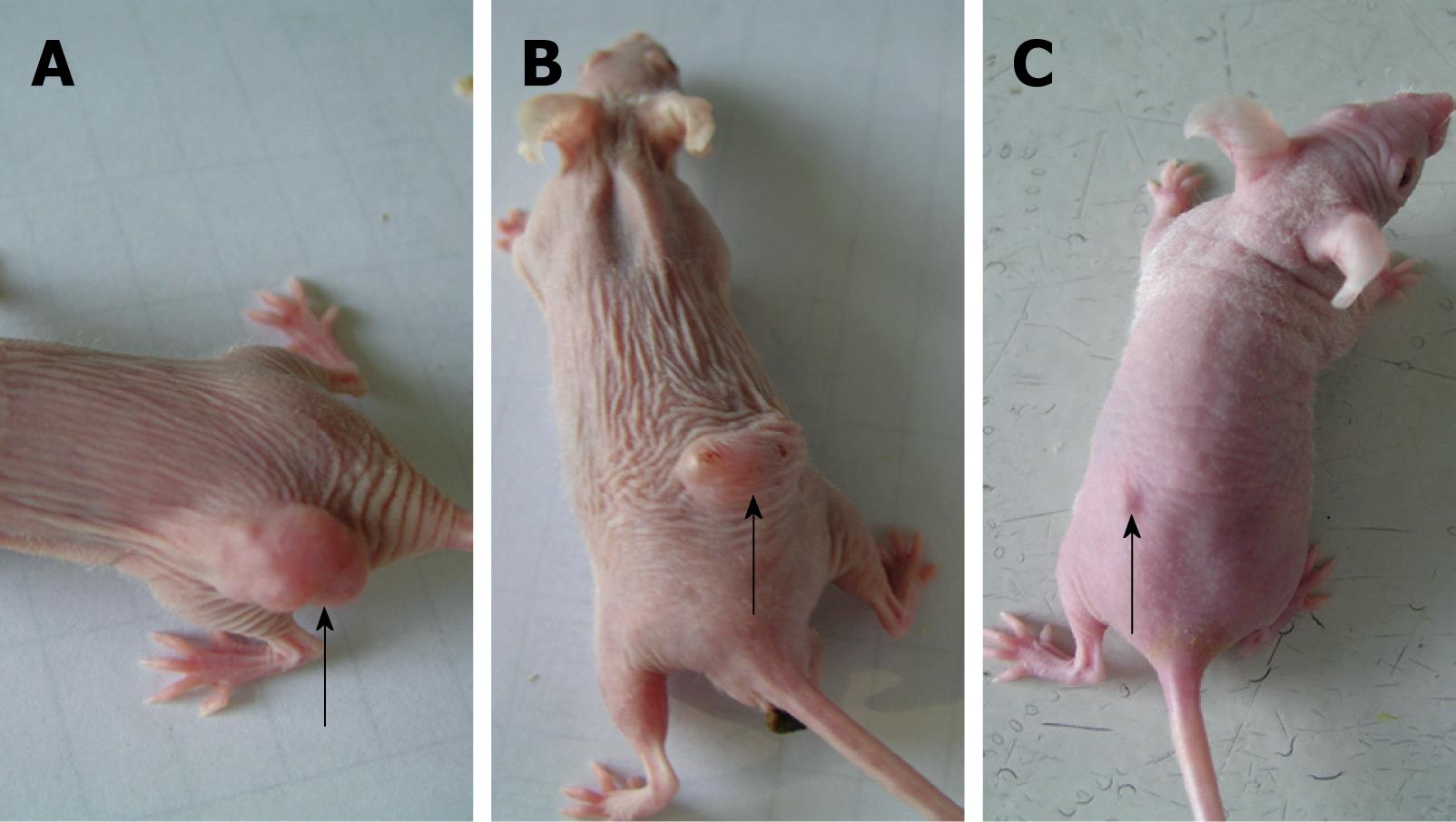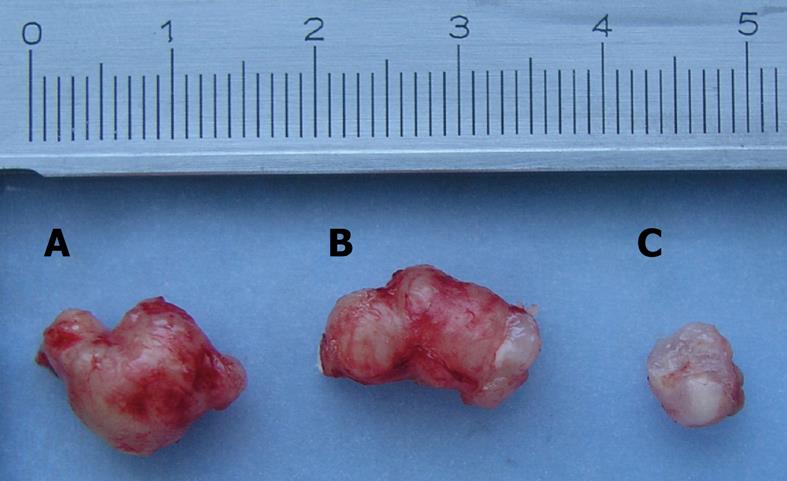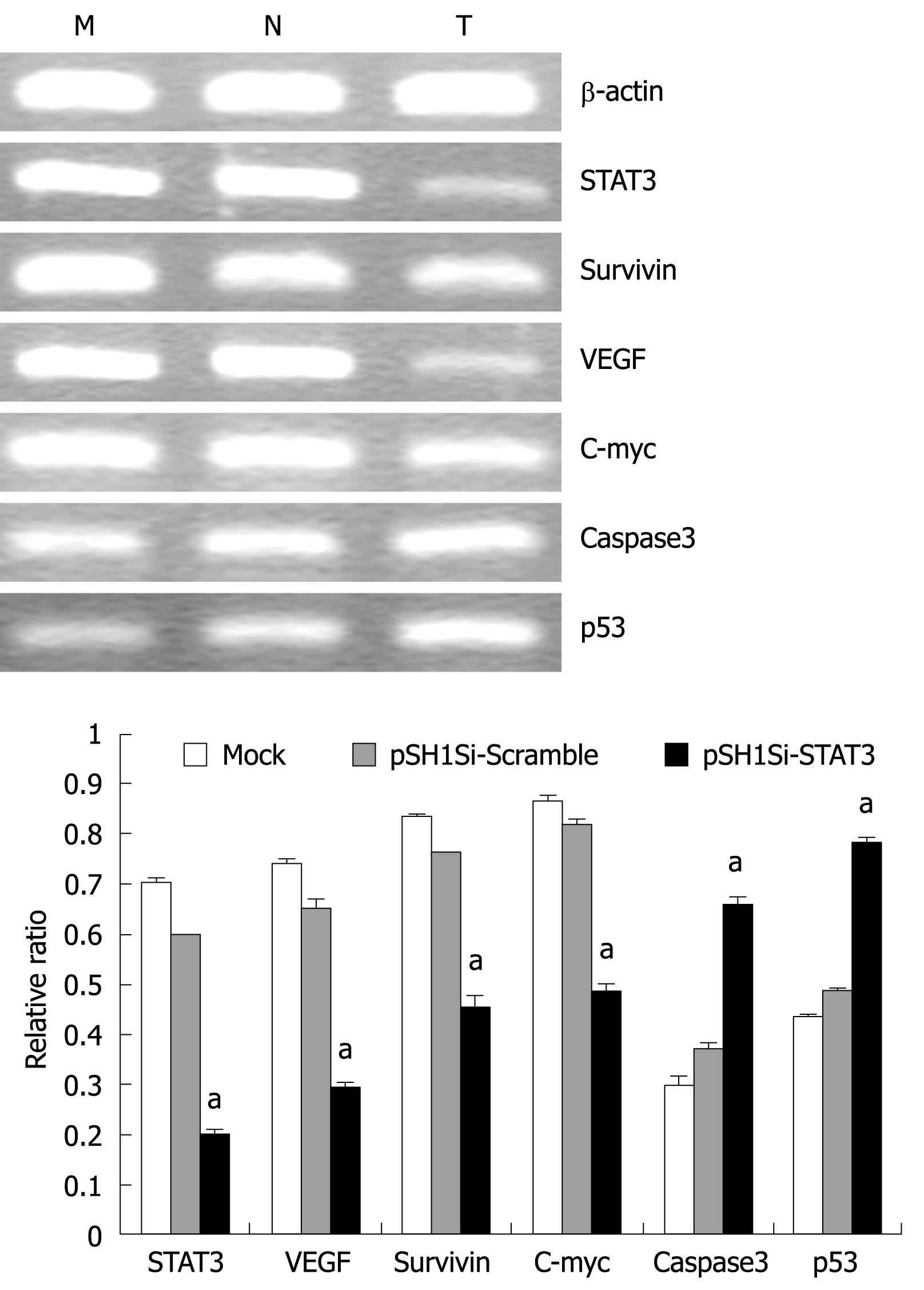Copyright
©2009 The WJG Press and Baishideng.
World J Gastroenterol. Jun 7, 2009; 15(21): 2602-2608
Published online Jun 7, 2009. doi: 10.3748/wjg.15.2602
Published online Jun 7, 2009. doi: 10.3748/wjg.15.2602
Figure 1 Growth curves of SMMC7721 tumor in nude mice in different treated groups.
aP < 0.01 vs pH1Si-Scramble group.
Figure 2 Comparison of tumor volume in nude mice in different treated groups.
A: Mock-treated group; B: pSH1Si-Scramble group; C: pSH1Si-STAT3 group. Black arrow points to tumor tissue.
Figure 3 Tumor appearances in different treated groups.
A: Mock-treated group; B: pSH1Si-Scramble group; C: pSH1Si-STAT3 group.
Figure 4 RT-PCR analysis of mRNA for STAT3 and related genes in tumor tissues of different treated groups.
M: Mock-treated group; N: pSH1Si-Scramble group; T: pSH1Si-STAT3 group. aP < 0.01 vs pSH1Si-Scramble group.
Figure 5 Western blotting analysis of STAT3 and related genes protein in tumor tissues in nude mice in different treated groups.
aP < 0.01 vs pSH1Si-Scramble group.
Figure 6 Detection of p-STAT3 protein expression by immunohistochemical assay of tumor tissues in nude mice in different treated groups (streptavidin biotin complex, × 400).
A: Mock-treated group; B: pSH1Si-Scramble group; C: pSH1Si-STAT3 group. Black arrows point to positive cells, which were stained brown in the nucleus, using antibodies to p-STAT3.
Figure 7 Tumor tissues in nude mice in different treated groups (HE, × 400).
A: Mock-treated group; B: pSH1Si-Scramble group; C: pSH1Si-STAT3 group. Black arrow points to positive cells, which had karyopyknosis and red staining of the cytoplasm.
Figure 8 Detection of apoptosis with TUNEL assay in tumor tissues of tumor-bearing nude mice in different treated groups (× 400).
A: Mock-treated group; B: pSH1Si-Scramble group; C: pSH1Si-STAT3 group, black arrow points to positive cells, in which the nuclei were stained brown.
- Citation: Li J, Piao YF, Jiang Z, Chen L, Sun HB. Silencing of signal transducer and activator of transcription 3 expression by RNA interference suppresses growth of human hepatocellular carcinoma in tumor-bearing nude mice. World J Gastroenterol 2009; 15(21): 2602-2608
- URL: https://www.wjgnet.com/1007-9327/full/v15/i21/2602.htm
- DOI: https://dx.doi.org/10.3748/wjg.15.2602
















